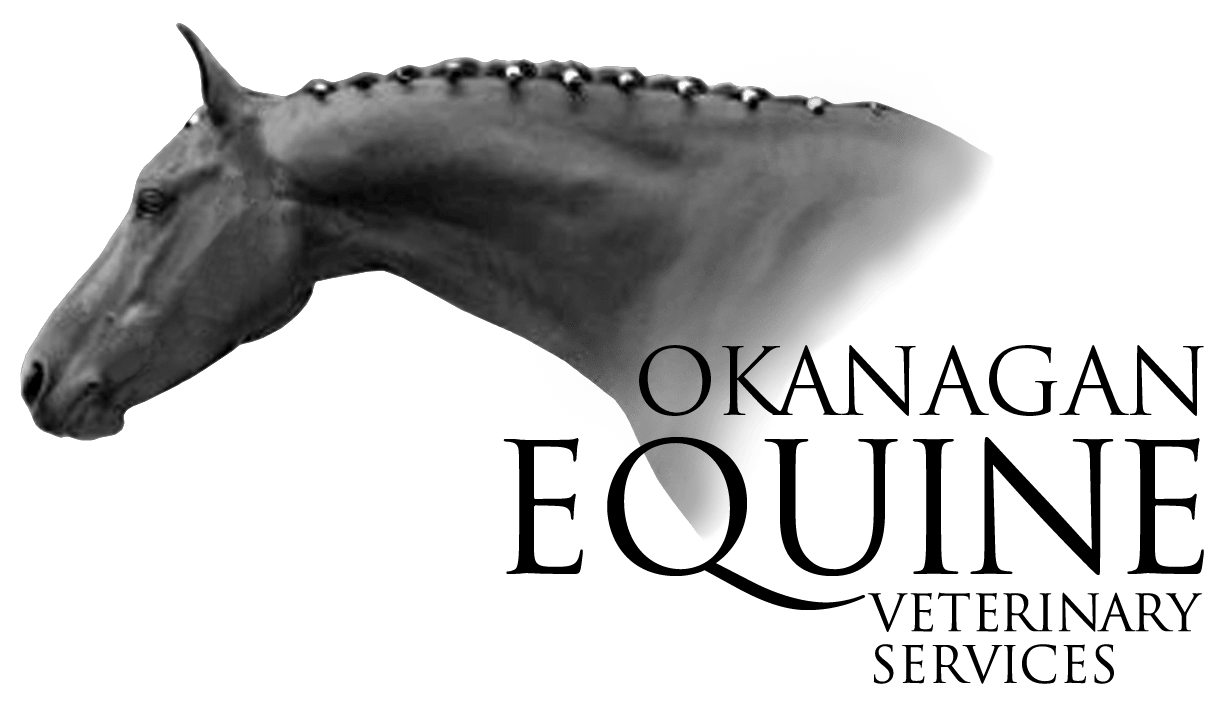There is very little overlap of the chewing surfaces at rest, and there would be little contact of the chewing surfaces if the horse chewed up and down, as people do. Horses have to chew side-to-side to get good occlusion or contact with upper and lower cheek teeth. Horses can chew on only one side of their mouth at a time.
The anisognathic (unequal) position of the upper and lower rows, or arcades, of teeth, plus side-to-side chewing causes the chewing surface of the teeth to wear at a 15-degree angle and allows sharp enamel points to develop on the lingual (cheek) side of the upper cheek teeth and the buccal (tongue) side of the lower cheek teeth.

The horse opens the mouth slightly and moves the jaw to one side. As the mouth closes the chewing surfaces shear off or minces food. The mobile mandibular arcade (jaw cheek teeth) grind feeds against the fixed (upper) maxillary arcade. As the jaw returns to the resting position, the chewing surfaces separate. The cheek teeth on either side should be used fairly equally. The coarser the feed, the more extensive the jaw motion becomes. When the front teeth or incisors are in contact, there should be no contact between the upper and lower molar arcades.
As a result of this anatomy of the chewing motion and the fact that processed feed has increased as a portion of the ration, all horses develop sharp enamel points on the outsides of the upper cheek teeth and the insides of the lower cheek teeth. To fully utilize feed, the horse’s entire cheek teeth arcades must be in contact when chewing to provide the required shearing and grinding of feed. Horses that are fed a ration that contains more processed feeds do not have the same chewing motion, and as a result, tend to develop enamel points more rapidly than free-ranging horses. The chewing motion in a horse requires good side-to-side and front-to-back mobility. Any malocclusion that is present restricts the lateral movement required for effective chewing and tends to accentuate any pre-existing problems.
Not all horses with malocclusion problems show clinical evidence of it. Horses adapt to chronic discomfort and pain and may just eat slower.
Some of the signs of dental problems are:
- Weight loss over a period of time while eating quite well
- Don’t chew long enough (bolts food)
- Slower or prolonged chewing (slow eater)
- Drops excessive feed or half-chewed feed
- Excessive salivation (drools)
- Elects to eat a portion of hay ration before grain (packing cheeks)
- Tilt head to one side or shakes the head while eating
- Sore developing on the tongue, lips, or gums
- Manure contains long pieces of poorly chewed-up hay.
- Bad odor from the muzzle
While riding you may notice:
- No bend or suppleness of the neck
- Resistant to bridling up and collection
- Tend to pull the muzzle up and out of turns
- Excessive bit activity
- Rearing and exaggerated response to bit pressure
Most horse owners have a veterinarian perform their horse’s vaccinations. At this time, a general physical exam and a brief dental exam can be performed. Please keep in mind that if you choose to share the veterinary call with other horse owners, it may not be possible to perform procedures such as power floats or full lameness work-ups at that visit. Often we will schedule a second visit if more extensive procedures are required. Other aspects of the general physical exam will include a hoof exam, exam of all four legs, checking the skin and mucous membranes, heart and lung check, eye exam, weight and condition assessment, and checking the back and neck. Also, any concerns can be discussed.
A soundness exam is more extensive and includes flexion tests and watching the horse move at different gaits and on different surfaces. The horse may be observed under the saddle as well. For the higher-level athlete, a yearly soundness exam is recommended. Some horses which demonstrate a reduction in their performance level may have soundness issues that can be identified through the soundness exam.
Laboratory testing can be part of your horse’s general physical and/or soundness exam. Again, higher-level athletes should have their blood tested to ensure that they are performing at their peak level. It is recommended that a fecal egg count be performed on all horses at least once yearly. Please refer to the section on worming for a more in-depth discussion on this topic.
Proper sheath cleaning almost always requires sedation and thus is often done along with the annual dental float. Geldings and stallions should have their sheaths checked at least once yearly, and some horses require cleaning more often. Conditions such as an excessive build-up of “smegma” or the development of “beans” in the urethral fossa can cause considerable discomfort.
Geriatric care encompasses all of the above components of the wellness program, however, the aged horse does have additional and different requirements. Dental care becomes extremely important and changes to the diet can be very beneficial in maintaining health and preventing problems such as impaction colic. Arthritis is common and the feet may be showing some wear and tear. The modern horse is able to enjoy a much more prolonged and healthy old age due to attention to all these details.
Finally, a well-planned and monitored exercise program is important for all horses, from the athlete to the aged horse. In general, horses do not complain or let us know when they are stiff and sore so we must be diligent in protecting them from the effects of overuse or unaccustomed exercise. Horses recovering from injury will benefit from a customized rehabilitation program.

